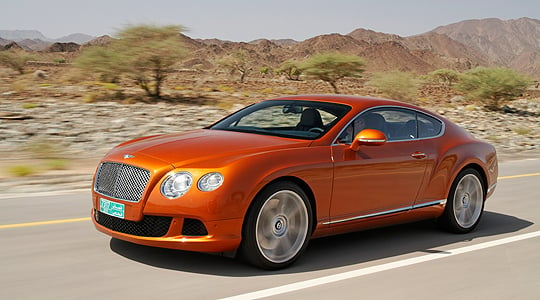
Two things I must not mention. Footballers and Phaetons. The former are by no means the only people to buy a Bentley Continental GT, although they were the highest-profile customers as the Crewe company partly reinvented itself in 2003, and while the latter did form the basis from which the Conti was engineered, the commonality is less than a cynic might think.
Actually, I like the Phaeton, but that admission should not concern us here. The Volkswagen Group's intriguing W12 engine, effectively two VR6s splayed away from each other and sharing a common crankshaft, has appeared in far more Bentleys than Phaetons or Touaregs; indeed, Bentley's engine shop in the Crewe factory has made more 12-cylinder engines than any other enterprise in the world.
Now, can you spot that there's a new Continental GT? Look again. See, the prow is prouder and the edges are sharper. The overall shape and the disposition of the sweeps and proportions are broadly as before, but no panel is unchanged. The front wings and the bootlid are now made from superformed aluminium, in which the sheet metal is heated to 500 degrees C into an almost plastic state, then shaped over a mould with compressed air. It enables the aluminium to take on shapes of a depth and complexity impossible by conventional presswork, and allows the crisp edges that are a key design difference between old and new GTs.
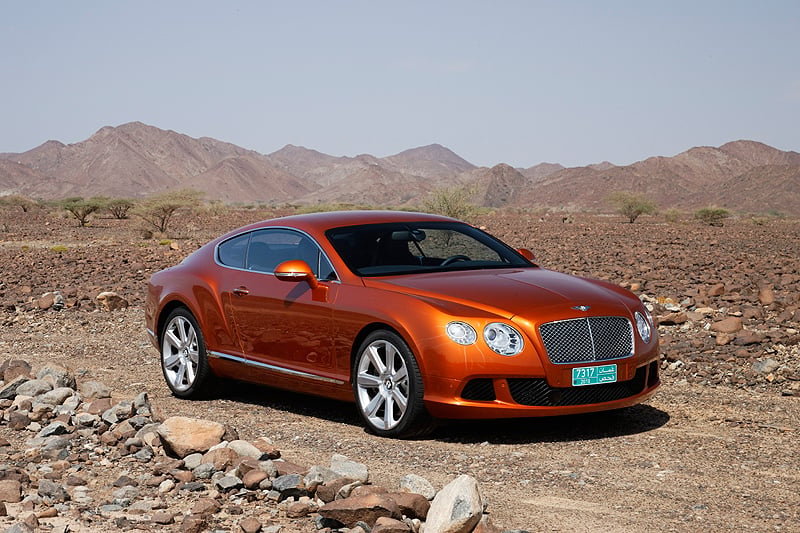
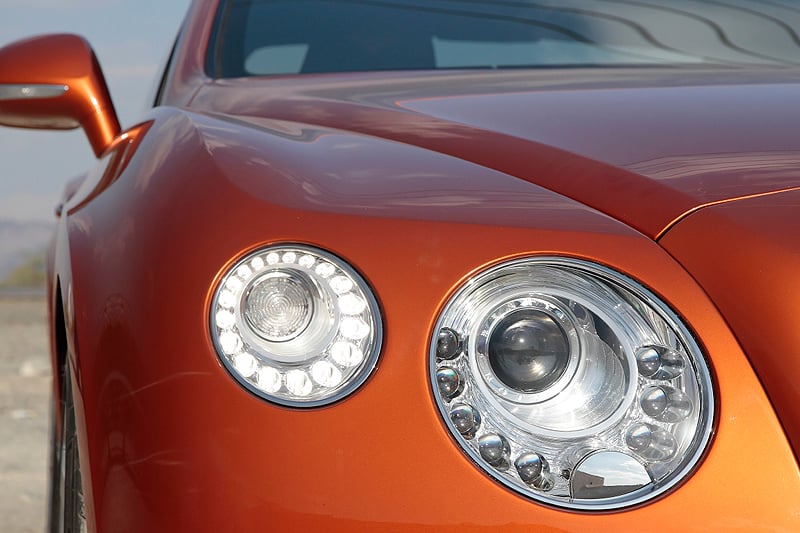
What else has changed? The tracks are wider, and the wheels bigger in diameter with the arches enlarged to accommodate them, given that the tyres' sidewalls are still of a sensible depth. This track increase has called for new suspension components, mostly of aluminium, including the front uprights. The four-wheel drive system's steady-state condition is now 40:60 front-to-rear instead of 50:50, and the engine has gained another 15bhp to take it to 575. The twin turbochargers ensure the torque peak of 516lb ft arrives at just 1700rpm.
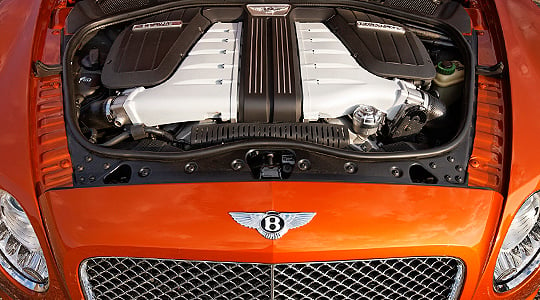
More power. Just what the GT needed. It has also shed 65kg of weight, an achievement all the more impressive when Bentley's engineering chief, Dr Ulrich Eichhorn, tells you that compliance with the latest safety legislation would have added 200kg if steps hadn't been taken to save weight elsewhere. Over half of this saving comes from the new front seats, which no longer have the belts built into them with all the strengthening that entailed. Instead, the belts are presented to the occupants by automatic arms which extend from the centre half-pillar, Mercedes coupé-fashion.
Half-pillar? Open all the side windows and you have unobstructed airiness, but this test drive is happening in Oman and a sealed, air-conditioned cabin is better – given that the outside temperature is around 40 degrees C, even in November. The roads here are fast, smooth and sweeping, just the occasional goat and pick-ups full of camels to watch for as big numbers arrive on the speedometer. This is apparently the fastest-growing road network in the world, and to Europeans used to gridlock it's a rare joy.
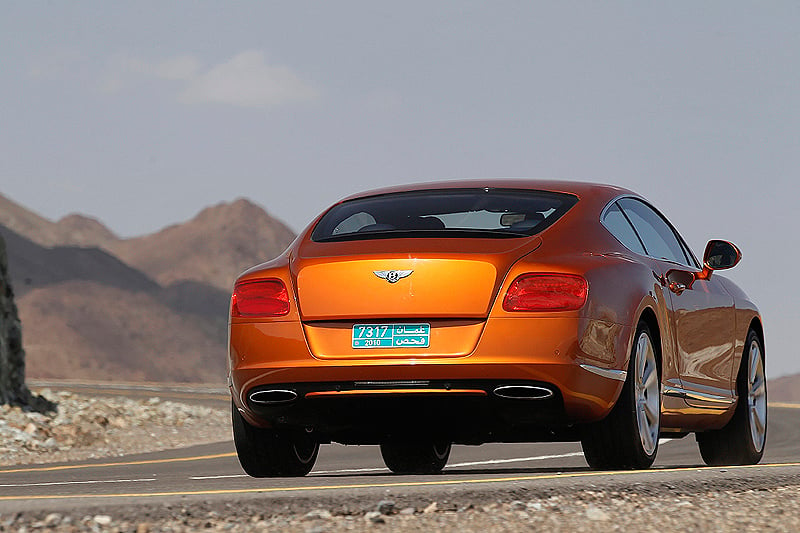
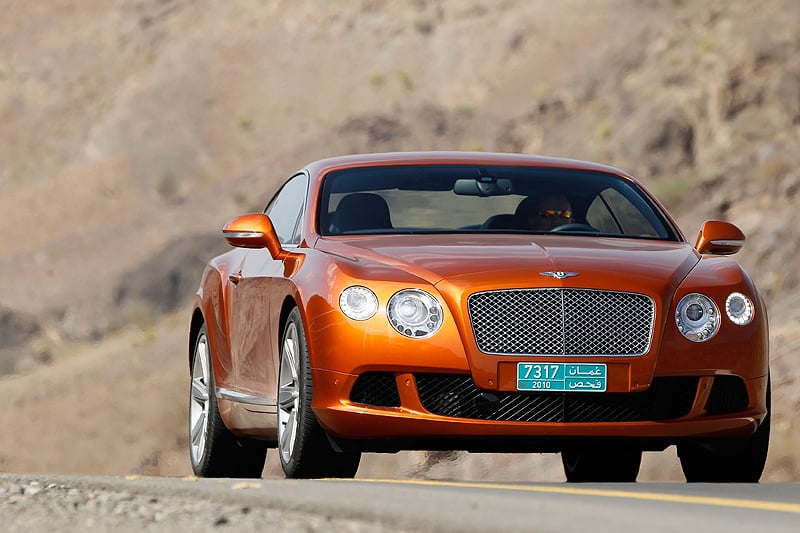
At first, the GT doesn't feel like a car able to reach 62mph in 4.6 seconds and not cease accelerating until 198mph. It simply squats slightly and gathers pace, and only when you re-check the speedometer do you realise how much faster you are going than you thought. That said, unlike the big Mulsanne's V8, this W12 is happy to rev and peak power doesn't arrive until 6000rpm.
For all this energy, though, it's not an especially lovable engine. The sound is that of a V6 with an added throb and some boominess, and – shock – at times you feel engine vibration through the steering wheel. And that is about all you feel, because in a fast bend you have little idea of how much grip is left. The steering's precision is admirable and its weighting is substantial enough, but it changes with cornering force hardly at all. In a 2320kg car of such pace and g-force potential, that can be unsettling.
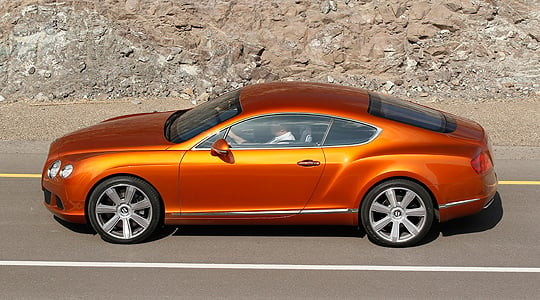
Powering out of a bend is more pleasurable. The revised front-to-rear torque split has already made this GT point more keenly into the bend than the last one did, and this reduced understeer evolves into a pleasing pose of gentle power oversteer as you accelerate out of the corner. The GT will never willingly powerslide, not in the dry at least, but the channelling of the hefty forces at play makes it a lot more agile than you would expect. Only when braking hard and late before a turn does the mass reveal itself, and that's when the optional carbon-ceramic brakes (£10,000!) prove at least some of their worth.
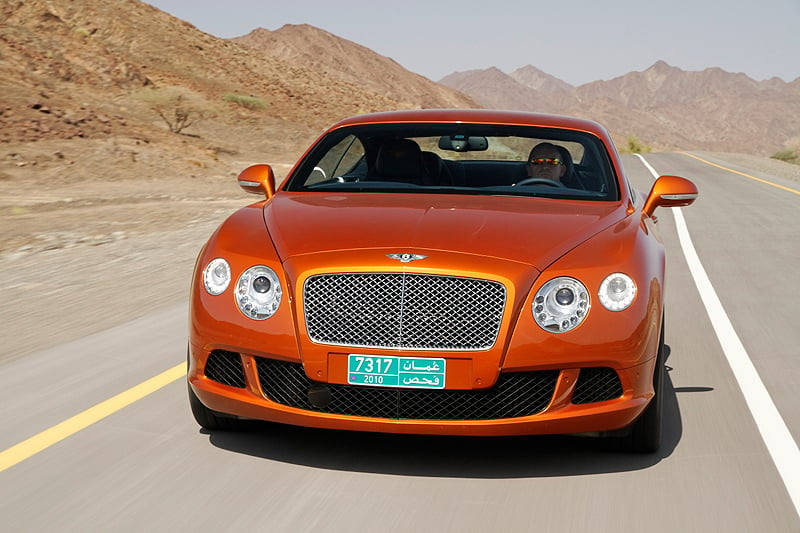
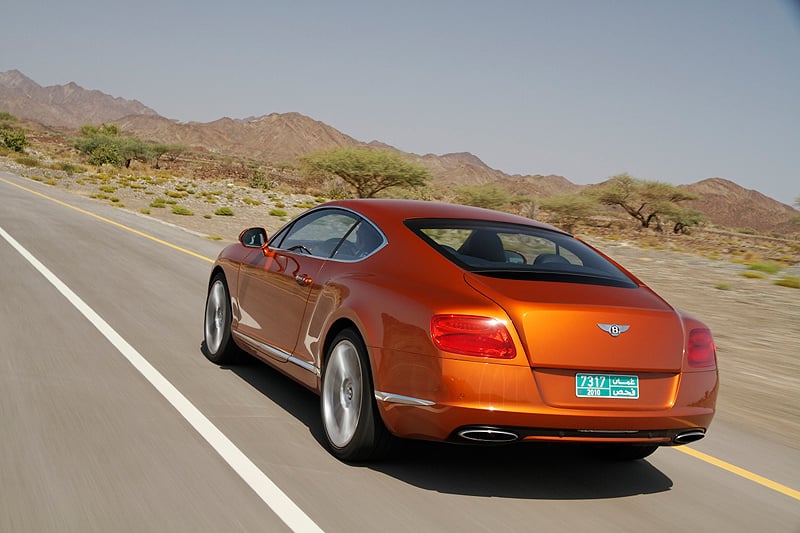
All this scorching around the desert's edge is heavy on fuel. That's little problem in Oman, where refilling the 90-litre tank costs under £20, but over here in Europe the prospect of an official 11.1mpg urban fuel thirst and a 384g/km CO2 rating means big bills. This engine can run on up to 85 per cent ethanol and feels exactly the same when doing so, except that the fuel gauge's needle plummets 30 per cent more quickly, but that is of little help in the UK.
An eight-speed gearbox would help, as fitted to the Mulsanne, but currently it can't cope with the spikes of the W12's torque curve. A remedy is planned, as is the launch in 2011 of a more fuel-efficient V8 engine alternative. For now, the six-speeder changes gear swiftly but not always smoothly, and two column-mounted paddles allow manual selection, including the facility to skip gears on the downshift by pulling the left paddle twice.
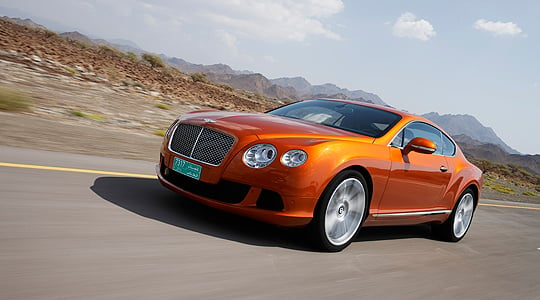
Smooth roads are not a great test of a car's ride quality, and on these surfaces there seems little difference between the air suspension's softest and firmest settings and the two stages in between. It's more a matter of changed algorithms for each mode, altering the range within which it operates, than simply making the dampers firmer or softer, but I have a hunch that even the softest will be a touch too fidgety for UK roads. I hope I'm wrong. One clever trick, though, is that the suspension lowers itself at speed by 10mm at the front and 15mm at the rear. Why more aft? Because Bentley found it better for the aerodynamics.

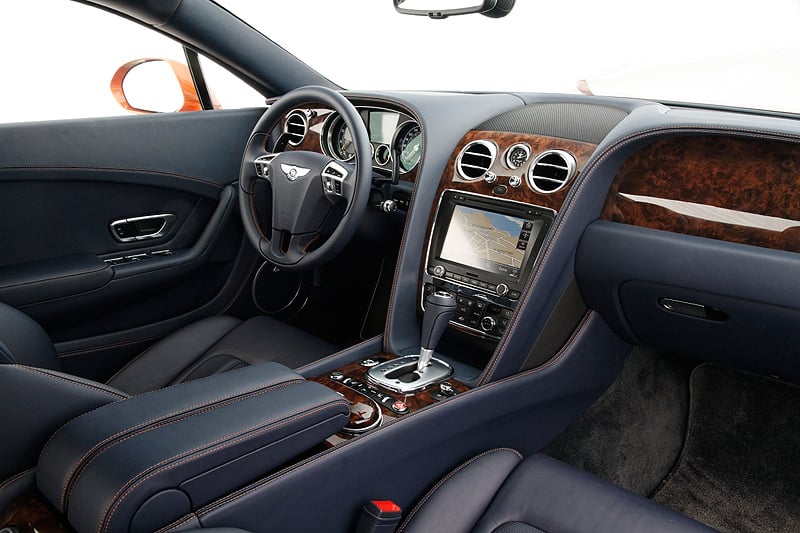
This GT, then, is an impressive engineering feat in the way it harnesses hefty forces and deploys them in useful directions. But it's the cabin that really makes it feel special enough to justify the £135,760 it costs before adding a yet-better sound system by Naim, a 'Driving Specification' pack including diamond-quilted seats and 21in wheels (£7155) and any amount of personalisation. The new front seats have knee cut-outs to give rear passengers more space (it's actually quite bearable in there), and the dashboard mirrors the bodywork by being an edgier, bolder version of what went before.

Leather, wood (or tasty engine-turned aluminium) and knurled knobs abound, all is sumptuous and beautifully made. This blend of luxury and sportiveness is exactly what a Bentley should offer, and the underbonnet view encapsulates the notion perfectly. There's no skin-deep styling here, no nasty plastic cover purporting to be some cartoon engine impression. What you see is what you have, and that is a miracle of dense packaging with real plenum chambers and real air filters fitted together like a high-end mechanical jigsaw. Right at the front is one of the most beautifully fashioned oil-filler caps I've ever seen. It matters, because it's a Bentley.
Text: John Simister
Photos: Bentley
ClassicInside - The Classic Driver Newsletter
Free Subscription!













